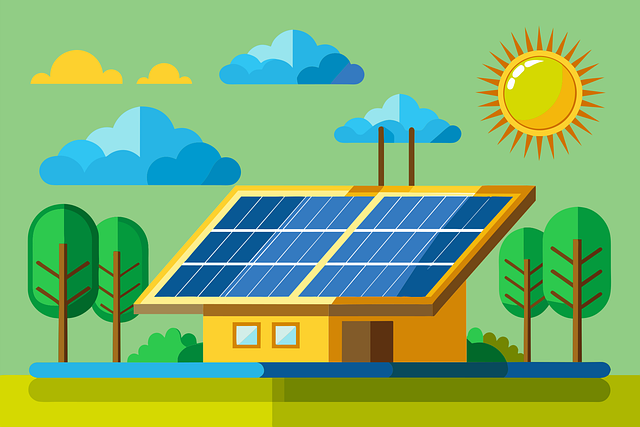“Empowering Energy Flexibility: Grid Integration for a Sustainable Future.”
Grid integration plays a crucial role in enabling energy flexibility by facilitating the seamless interaction between various energy sources, storage systems, and demand-side management. As the energy landscape evolves with the increasing adoption of renewable energy sources, such as solar and wind, the need for a flexible and resilient grid becomes paramount. Effective grid integration allows for the optimization of energy distribution, enhances the reliability of supply, and supports the dynamic balancing of energy demand and generation. By leveraging advanced technologies, such as smart grids and demand response systems, grid integration empowers consumers and businesses to adjust their energy usage in real-time, thereby maximizing efficiency and minimizing costs. Ultimately, it serves as a foundational element in the transition towards a more sustainable and responsive energy system.
Grid Integration Technologies for Enhanced Energy Flexibility
As the world increasingly shifts towards renewable energy sources, the importance of grid integration technologies in enabling energy flexibility cannot be overstated. These technologies serve as the backbone of modern energy systems, facilitating the seamless incorporation of diverse energy resources while ensuring reliability and efficiency. At the heart of this transformation lies the need for a more dynamic and responsive grid that can accommodate fluctuations in energy supply and demand. This is where grid integration technologies come into play, providing the necessary tools to enhance energy flexibility.
One of the most significant advancements in grid integration is the development of smart grid technologies. These systems utilize advanced communication and information technologies to monitor and manage electricity flows in real-time. By enabling two-way communication between utilities and consumers, smart grids empower users to make informed decisions about their energy consumption. For instance, demand response programs allow consumers to adjust their energy usage during peak periods, thereby alleviating stress on the grid and optimizing resource allocation. This not only enhances energy flexibility but also contributes to cost savings for both consumers and utilities.
Moreover, energy storage systems have emerged as a critical component of grid integration. These systems, which include batteries and other storage technologies, allow for the capture and storage of excess energy generated during periods of high production, such as sunny or windy days. By storing this energy for later use, storage systems help to balance supply and demand, ensuring that renewable energy can be utilized even when generation is low. This capability is particularly vital for integrating intermittent renewable sources like solar and wind, which are subject to variability. As a result, energy storage not only enhances grid reliability but also supports the transition to a more sustainable energy landscape.
In addition to smart grids and energy storage, the integration of distributed energy resources (DERs) plays a pivotal role in enhancing energy flexibility. DERs, which include rooftop solar panels, small wind turbines, and electric vehicles, can be deployed at various locations within the grid. By harnessing these localized energy sources, utilities can reduce transmission losses and improve overall grid efficiency. Furthermore, the aggregation of DERs allows for greater participation in energy markets, enabling consumers to sell excess energy back to the grid. This not only incentivizes the adoption of renewable technologies but also fosters a more resilient energy system.
Another key aspect of grid integration is the implementation of advanced forecasting and analytics tools. These technologies enable grid operators to predict energy demand and generation patterns with greater accuracy. By leveraging big data and machine learning algorithms, operators can optimize grid operations, anticipate potential issues, and make informed decisions regarding resource allocation. This proactive approach enhances the overall flexibility of the energy system, allowing for a more responsive and adaptive grid.
As we look to the future, the role of grid integration technologies in enabling energy flexibility will only continue to grow. With ongoing advancements in digitalization, automation, and renewable energy technologies, the potential for a more flexible and resilient energy system is within reach. By embracing these innovations, we can create a sustainable energy future that not only meets the demands of today but also paves the way for a cleaner, more efficient tomorrow. In conclusion, the integration of smart grids, energy storage, distributed energy resources, and advanced analytics is essential for enhancing energy flexibility, ultimately leading to a more sustainable and resilient energy landscape.
The Impact of Smart Grids on Energy Management

The advent of smart grids has revolutionized energy management, significantly enhancing the efficiency and reliability of electricity distribution. By integrating advanced technologies such as sensors, smart meters, and automated control systems, smart grids facilitate real-time communication between energy producers and consumers. This dynamic interaction not only optimizes energy flow but also empowers consumers to make informed decisions about their energy usage, ultimately leading to a more flexible energy landscape.
One of the most profound impacts of smart grids is their ability to support renewable energy sources. As the world increasingly shifts towards sustainable energy solutions, the integration of solar, wind, and other renewable resources into the grid becomes essential. Smart grids enable this transition by providing the necessary infrastructure to manage the variability and intermittency associated with renewable energy generation. For instance, when solar energy production peaks during sunny days, smart grids can redirect excess energy to storage systems or other consumers, thereby preventing waste and ensuring a balanced supply.
Moreover, smart grids enhance demand response capabilities, allowing utilities to adjust energy consumption patterns based on real-time supply conditions. This flexibility is crucial in managing peak demand periods, which can strain traditional grid systems. By incentivizing consumers to reduce or shift their energy usage during high-demand times, smart grids help to alleviate pressure on the grid, reduce the need for additional power plants, and lower overall energy costs. This not only benefits consumers through potential savings but also contributes to a more stable and resilient energy system.
In addition to improving demand response, smart grids facilitate the integration of electric vehicles (EVs) into the energy ecosystem. As the adoption of EVs continues to rise, the need for efficient charging solutions becomes increasingly important. Smart grids can manage the charging of EVs by optimizing charging times based on grid conditions and energy prices. For example, during periods of low demand or high renewable generation, EVs can be charged at lower costs, while during peak times, charging can be delayed or reduced. This not only enhances the user experience for EV owners but also supports grid stability by flattening demand peaks.
Furthermore, the data collected through smart grid technologies plays a pivotal role in energy management. Utilities can analyze consumption patterns, identify inefficiencies, and predict future energy needs with greater accuracy. This data-driven approach allows for more strategic planning and investment in infrastructure, ensuring that energy systems can adapt to changing demands and technological advancements. As a result, smart grids not only improve operational efficiency but also foster innovation in energy services and products.
As we look to the future, the role of grid integration in enabling energy flexibility will only become more pronounced. The ongoing development of smart grid technologies will continue to enhance the ability of energy systems to respond to fluctuations in supply and demand. This adaptability is essential in a world where energy consumption patterns are evolving rapidly due to factors such as urbanization, climate change, and technological advancements. By embracing the potential of smart grids, we can create a more sustainable, resilient, and flexible energy future that meets the needs of both consumers and the environment.
In conclusion, the impact of smart grids on energy management is profound and multifaceted. By facilitating the integration of renewable energy sources, enhancing demand response capabilities, supporting electric vehicle adoption, and leveraging data analytics, smart grids are transforming the way we produce, distribute, and consume energy. As we continue to advance in this area, the promise of a more flexible and efficient energy system becomes increasingly attainable, paving the way for a sustainable energy future.
Renewable Energy Sources and Their Role in Grid Flexibility
The transition to renewable energy sources is a pivotal aspect of modern energy systems, particularly in the context of enhancing grid flexibility. As the world increasingly turns to solar, wind, and other renewable sources to meet energy demands, understanding their role in grid integration becomes essential. Renewable energy sources are inherently variable, which presents both challenges and opportunities for grid operators. The integration of these sources into the existing energy infrastructure requires innovative solutions that can accommodate fluctuations in generation and demand.
Solar energy, for instance, is abundant during sunny days but can diminish significantly during cloudy weather or at night. Similarly, wind energy generation is contingent upon wind patterns, which can be unpredictable. This variability necessitates a flexible grid that can respond dynamically to changes in energy supply and demand. To achieve this, energy storage technologies, such as batteries, play a crucial role. By storing excess energy generated during peak production times, these systems can release energy back into the grid when generation falls short, thus smoothing out the fluctuations and ensuring a reliable power supply.
Moreover, the integration of renewable energy sources can be enhanced through demand-side management strategies. By encouraging consumers to adjust their energy usage in response to supply conditions, grid operators can alleviate stress on the system during peak demand periods. For example, smart appliances and home energy management systems can shift energy consumption to times when renewable generation is high, thereby optimizing the use of available resources. This not only helps in balancing the grid but also empowers consumers to play an active role in energy management.
In addition to storage and demand-side management, the development of a smart grid infrastructure is vital for facilitating the integration of renewable energy sources. Smart grids utilize advanced communication and control technologies to monitor and manage electricity flows in real-time. This capability allows for better coordination between generation and consumption, enabling a more responsive and resilient energy system. With real-time data, grid operators can make informed decisions about when to dispatch renewable energy, when to draw from storage, and how to manage demand effectively.
Furthermore, the geographical diversity of renewable energy sources can enhance grid flexibility. For instance, while one region may experience low solar generation due to cloud cover, another area may be enjoying sunny conditions. By interconnecting grids across different regions, it becomes possible to share resources and balance supply and demand more effectively. This interconnectedness not only improves reliability but also maximizes the utilization of renewable energy, reducing reliance on fossil fuels and lowering greenhouse gas emissions.
As the energy landscape continues to evolve, the role of renewable energy sources in enabling grid flexibility will only grow in importance. Policymakers, utilities, and technology developers must collaborate to create frameworks that support the integration of these resources. This includes investing in infrastructure, promoting research and development in energy storage and smart grid technologies, and implementing regulatory measures that incentivize flexibility. By embracing these strategies, we can build a more resilient and sustainable energy future that leverages the full potential of renewable energy sources while ensuring a stable and reliable power supply for all. In conclusion, the synergy between renewable energy integration and grid flexibility is not just a technical challenge; it is a fundamental component of a sustainable energy transition that can lead to a cleaner, more efficient, and more resilient energy system.
Policy Frameworks Supporting Grid Integration for Energy Flexibility
The transition to a more flexible energy system is increasingly recognized as essential for accommodating the growing share of renewable energy sources in the grid. As countries strive to meet ambitious climate goals, the role of grid integration becomes paramount. Policy frameworks that support this integration are crucial in enabling energy flexibility, which allows for the efficient management of energy supply and demand. These frameworks not only facilitate the incorporation of diverse energy resources but also promote the development of technologies that enhance grid resilience and reliability.
One of the primary components of effective policy frameworks is the establishment of clear regulatory guidelines that encourage investment in grid infrastructure. Governments can incentivize utilities and private companies to upgrade existing systems or develop new technologies that enhance grid capacity and flexibility. For instance, policies that support the deployment of smart grid technologies enable real-time monitoring and management of energy flows, allowing for better integration of distributed energy resources such as solar panels and wind turbines. By creating a conducive environment for innovation, these policies help to ensure that the grid can adapt to the fluctuating nature of renewable energy generation.
Moreover, financial mechanisms play a significant role in supporting grid integration. Governments can implement subsidies, tax incentives, or grants to lower the financial barriers associated with the adoption of energy storage systems and demand response programs. These financial tools not only encourage the deployment of technologies that enhance energy flexibility but also stimulate market competition, driving down costs for consumers. As a result, a more flexible energy system can emerge, where consumers are empowered to manage their energy use more effectively, contributing to overall grid stability.
In addition to financial incentives, policy frameworks must also address the need for comprehensive planning and coordination among various stakeholders. This includes utilities, regulators, and consumers, all of whom play a vital role in the energy ecosystem. By fostering collaboration and communication, policymakers can ensure that the integration of renewable energy sources is aligned with grid operations and planning. For example, regional coordination can facilitate the sharing of resources across different areas, optimizing energy distribution and reducing the risk of outages. Such collaborative efforts are essential for creating a resilient energy system that can respond to both short-term fluctuations and long-term changes in energy demand.
Furthermore, the role of consumer engagement cannot be overlooked in the context of energy flexibility. Policies that promote awareness and education about energy usage empower consumers to make informed decisions about their energy consumption. Programs that encourage participation in demand response initiatives allow consumers to adjust their energy use during peak periods, thereby alleviating stress on the grid. By integrating consumer behavior into the energy management equation, policymakers can enhance the overall effectiveness of grid integration efforts.
Finally, international cooperation is increasingly important in the realm of energy flexibility. As countries face similar challenges related to renewable energy integration, sharing best practices and lessons learned can accelerate progress. Collaborative initiatives, such as cross-border electricity trading, can enhance grid stability and flexibility on a larger scale. By working together, nations can develop robust policy frameworks that not only support their individual energy goals but also contribute to global efforts in combating climate change.
In conclusion, the role of policy frameworks in supporting grid integration for energy flexibility is multifaceted and critical. By establishing clear regulations, providing financial incentives, fostering stakeholder collaboration, engaging consumers, and promoting international cooperation, policymakers can create an environment conducive to a more flexible and resilient energy system. This, in turn, will facilitate the transition to a sustainable energy future, where renewable resources can be harnessed effectively to meet the needs of society.
Q&A
1. **Question:** What is grid integration in the context of energy flexibility?
**Answer:** Grid integration refers to the process of connecting various energy resources, such as renewable energy sources, storage systems, and demand response technologies, to the electrical grid to enhance the overall flexibility and reliability of energy supply and consumption.
2. **Question:** How does grid integration facilitate the use of renewable energy?
**Answer:** Grid integration allows for the efficient management of variable renewable energy sources, such as solar and wind, by balancing supply and demand, enabling energy storage, and facilitating the distribution of excess energy to where it is needed.
3. **Question:** What role does demand response play in energy flexibility through grid integration?
**Answer:** Demand response programs incentivize consumers to adjust their energy usage during peak demand periods or when renewable generation is high, thereby enhancing grid stability and optimizing energy consumption patterns.
4. **Question:** What are the benefits of energy flexibility enabled by grid integration?
**Answer:** The benefits include improved grid reliability, reduced energy costs, enhanced integration of renewable energy, lower greenhouse gas emissions, and increased resilience against energy supply disruptions.
Conclusion
Grid integration plays a crucial role in enabling energy flexibility by facilitating the seamless interaction between various energy sources, storage systems, and demand-side management. It allows for the efficient use of renewable energy, enhances the reliability of the power supply, and supports the integration of distributed energy resources. By optimizing energy flow and enabling real-time adjustments to consumption patterns, grid integration empowers consumers and businesses to respond to market signals, ultimately leading to a more resilient and sustainable energy system. In conclusion, effective grid integration is essential for achieving energy flexibility, promoting the transition to a low-carbon economy, and ensuring a stable and efficient energy future.




